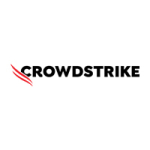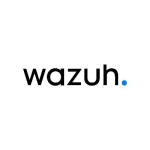Securonix provides us with a fine-tuned environment. It helps eliminate false positives with certain parameters.
It is a SIEM that works automatically when it comes to behavior and the analysis of certain parameters that we did not have visibility into before. It is very productive for our business. So far, from what we have seen, Securonix is very useful.
Securonix provides "enrichment" of event information thanks to connectors with Third Party Intelligence and that has helped to make us more efficient in our investigations. Threat hunting that used to take two to three hours can now be done in less than one hour because we have certain graphs configured within the platform that allow us to search for more detailed events in a shorter amount of time. The training we have received has been absorbed quickly by our analysts and we have managed to do more in less time.
Another benefit is that, as a SaaS environment, it allows us to free ourselves from support issues. We escalate everything directly with Securonix.
Among the most valuable features are its
- reporting capacity
- graphics
- UEBA analytics.
The UEBA functionality indicates a lot about behaviors that are not found through a traditional SIEM. We have exploited that more than anything since we started using it.
The autonomous threat sweeper also seems very good to me. It is a very striking and productive tool for our business. It's highly important to implement ATS because it allows us to scan for specific events that may happen.
Also, the ease of searching that the Spotter tool offers us is a welcome feature and the data insights have been very useful for our research work.
It seems to me that within Securonix there is no option for completely visualizing the types of sources or if there is any loss of logs. I've heard that they have an additional module to validate those types of cases, but in terms of the platform itself only, I can only see how often it sends data but not any specific detail.
I have been using Securonix Next-Gen SIEM for six months.
We have not had any major problems with the platform since we started working with it. There has only been one problem that had to do with something that did not load on the platform, but that was it.
We have had no problems ingesting all our log sources.
Being a cloud environment, it gives us unlimited scalability. When we have integrated larger sources we have not experienced any problems.
We have had some slightly delayed response times from technical support, but it is nothing out of the ordinary.
We use platforms such as RSA enVision, QRadar, and McAfee. We have not eliminated these platforms but we are more inclined toward Securonix because it provides us with UEBA analytics, which is something that we have not been able to exploit as much on other platforms. The solution's UEBA data analysis is what caught our attention.
I was involved in a certain part of the implementation that focused on the RING installation. The implementation was simple. They shared an interactive manual with us and there were no problems. Onboarding the sources was not such a complicated process. We needed three to five employees for the implementation.
They also provided guided training in which a representative from Securonix helped us with the queries we had.
Maintenance is mostly managed by Securonix. We are hardly involved in it.
More than anything, we have seen ROI thanks to the metrics we get from Securonix.
Securonix is very user-friendly and intuitive. In terms of nomenclature, it is very easy to understand where the information you want is located. Compared to other platforms, there are several UI qualities in favor of Securonix. It puts everything at your fingertips and the options tab is very accessible.
In terms of reducing false positives, we have not seen much difference between Securonix and other platforms at the moment.
Information about Securonix is all available within the online documentation and it enables you to get to know the platform independently. It is very beneficial if you're looking for a high-quality SIEM.
The most important thing I have learned by using Securonix is the exploitation of UEBA analytics. I had not seen that in another SIEM and it has been a definite benefit for me.
Foreign Language:(Spanish)
¿Cómo ha ayudado a mi organización?
Securonix nos proporciona un entorno optimizado. Ayuda a eliminar falsos positivos con ciertos parámetros.
Es un SIEM que funciona de forma automática en respecto a comportamientos y análisis de ciertos parámetros que no eran visibles antes. Es muy productivo para nuestro negocio. Hasta ahora, por lo que hemos visto, Securonix es muy útil.
Securonix proporciona un "enriquecimiento" de la información de eventos gracias a conexiones con Third Party Intelligence, esto nos ha ayudado a ser más eficientes en nuestras investigaciones. La búsqueda de amenazas que antes tomaba de dos a tres horas ahora se puede hacer en menos de una hora porque tenemos ciertos gráficos configurados dentro de la plataforma que nos permiten buscar eventos más detallados en menos tiempo. La formación que hemos recibido ha sido absorbida rápidamente por nuestros analistas y hemos conseguido hacer más en menos tiempo.
Otro beneficio que tiene es que, como se trata de un entorno SaaS, nos permite liberarnos de los problemas de soporte. Escalamos todo directamente con Securonix.
¿Qué es lo más valioso?
Entre las características más valiosas se encuentran..
- capacidad de reporte
- gráficos
- analíticas UEBA.
La funcionalidad de UEBA indica mucho sobre comportamientos que no se encuentran a través de un SIEM tradicional. Eso lo hemos explotado más que nada desde que empezamos a usarlo.
El barredor de amenazas autónomo también me parece muy bueno. Es una herramienta muy llamativa y productiva para nuestro negocio. Es muy importante implementar ATS porque nos permite buscar eventos específicos que puedan ocurrir.
Además, la facilidad de búsqueda que nos ofrece la herramienta Spotter es una característica beneficiosa y la información de los datos ha sido muy útil para nuestro trabajo de investigación.
¿Qué necesita mejorar?
Me parece que dentro de Securonix no hay opción de visualizar completamente los tipos de fuentes ni tampoco si hay alguna pérdida de logs. Escuché que tienen un módulo adicional para validar ese tipo de casos, pero en términos de la plataforma en sí, solo puedo ver la frecuencia con la que envía datos, pero ningún detalle específico
¿Por cuánto tiempo he usado la solución?
He estado usando Securonix Next-Gen SIEM durante seis meses.
¿Qué pienso sobre la estabilidad de la solución?
No hemos tenido mayores problemas con la plataforma desde que empezamos a trabajar con ella. Solo ha habido un problema que tenía que ver con algo que no cargaba en la plataforma, pero eso fue todo.
No hemos tenido problemas para ingerir todas nuestras fuentes de registro.
¿Qué opino de la escalabilidad de la solución?
Al ser un entorno en la nube, nos brinda una escalabilidad ilimitada. Cuando hemos integrado fuentes más grandes no hemos experimentado ningún problema.
¿Y el servicio de atención al cliente y el soporte?
Hemos tenido algunos tiempos de respuesta ligeramente retrasados por parte del soporte técnico, pero no es nada fuera de lo común.
¿Cómo calificaría el servicio y soporte al cliente?
Positivo
¿Qué solución usé anteriormente y por qué cambié?
Utilizamos plataformas como RSA enVision, QRadar y McAfee. No hemos eliminado estas plataformas, pero nos inclinamos más por Securonix porque nos brinda análisis UEBA, que es algo que no hemos podido explotar tanto en otras plataformas. El análisis de datos UEBA de la solución es lo que llamó nuestra atención.
¿Cómo fue la configuración inicial?
Estuve involucrado en cierta parte de la implementación que se centró en la instalación de RING. La implementación fue sencilla. Compartieron un manual interactivo con nosotros y no hubo problemas. Incorporar las fuentes no fue un proceso tan complicado. Necesitábamos de tres a cinco empleados para la implementación.
También brindaron capacitación guiada en la que un representante de Securonix nos ayudó con las consultas que teníamos.
El mantenimiento es administrado principalmente por Securonix. Apenas estamos involucrados en eso.
¿Cuál fue nuestro Retorno de Inversión?
Más que nada, hemos visto el Retorno de Inversión gracias a las métricas que obtenemos de Securonix.
¿Qué otras soluciones evalué?
Securonix es muy fácil de usar e intuitivo. En cuanto a la nomenclatura, es muy fácil entender dónde se encuentra la información que buscas. En comparación con otras plataformas, hay varias cualidades de interfaz de usuario a favor de Securonix. Pone todo al alcance de tu mano y la pestaña de opciones es muy accesible.
En términos de reducción de falsos positivos, no hemos visto mucha diferencia entre Securonix y otras plataformas por el momento.
¿Qué otro consejo tengo?
Toda la información sobre Securonix está disponible en la documentación en línea y te permite conocer la plataforma de forma independiente. Es muy beneficioso si estás buscando un SIEM de alta calidad.
Lo más importante que he aprendido usando Securonix es la explotación de análisis UEBA. Eso no lo había visto en otro SIEM y definitivamente ha sido un beneficio para mí.




















